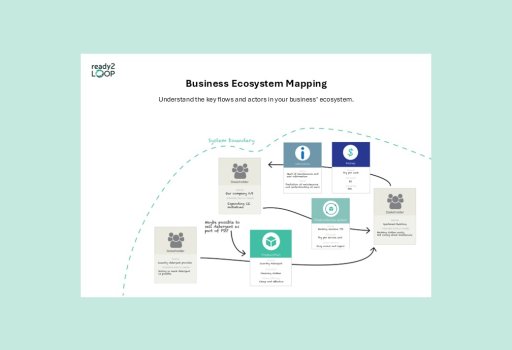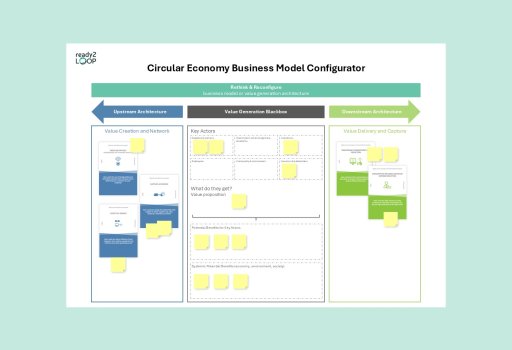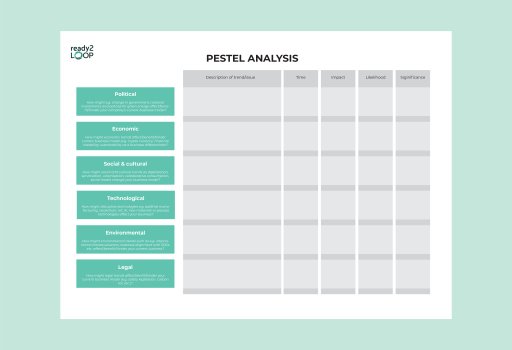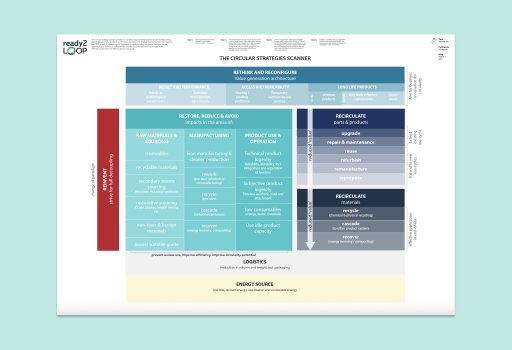Embracing Circularity to Support a Company's Environmental Commitment
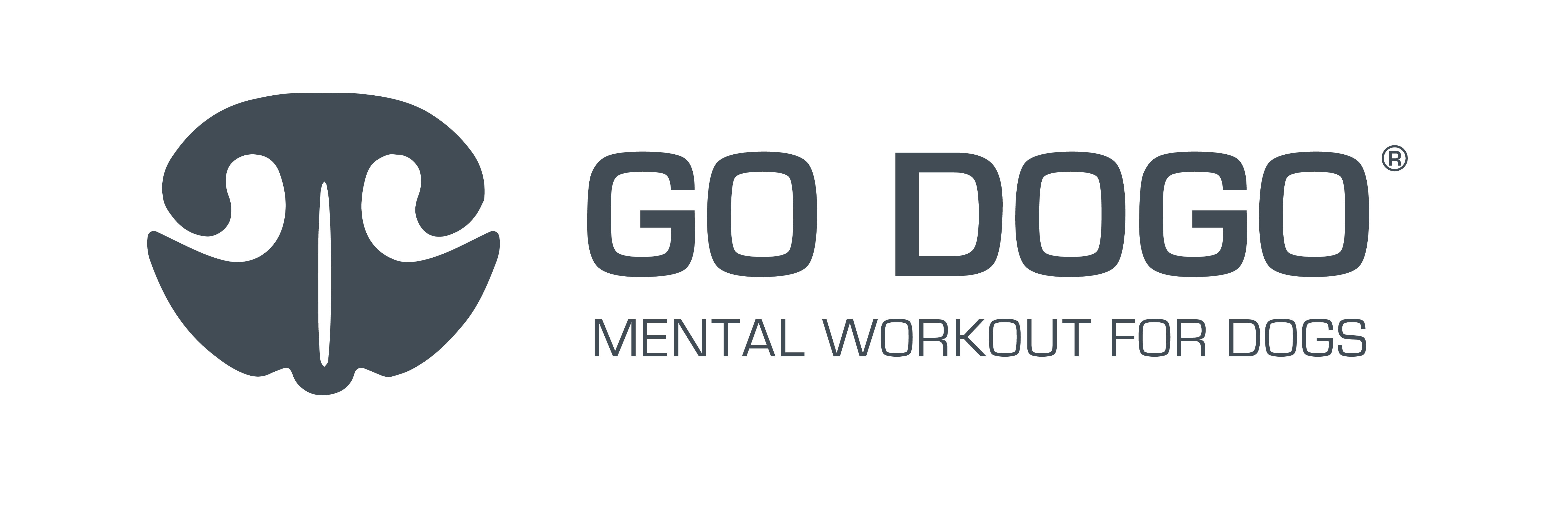
“We believe that even though we perform maintenance and repairing ourselves, we were presented tools on the ready2LOOP platform that are a useful next step for our plans to concretize our actions and decide on how to filter down various maintenance scenarios.” – Ioannis Kanellopoulos, Head of Product Design.

Opportunity
As a startup, Go Dogo is in an early, dynamic phase with numerous opportunities. While the absence of long-term contracts affords flexibility for adapting to the Circular Economy (CE), dependence on funding constrains options. Opportunities abound in logistics, materials, forthcoming legislation, device modularity, and improving maintenance and user support. Despite a readiness level of only 28%, the company scores well, and the competitive landscape is limited, granting Go Dogo a unique market position.
Path
The main dimensions for Go Dogo towards its transition path are Product & Service Innovation and Use, Support & Maintenance. The tools used include the Recirculation Strategy Decision Tree and Circularity Concept Evaluation. The Recirculation Strategy Decision Tree suggests five circularity strategies: Reuse, Repair & Maintenance, Refurbish, Remanufacture, and Recycle. The Circularity Concept Evaluation tool provides transition guidelines and benchmarks against competitors. The proposed intervention focuses on a modular design to support both dimensions throughout the transitions.
Outcome
The intervention positively impacts various aspects of circularity. Emphasizing modularity extends the product's lifespan, enables repairs and upgrades, decreases repair logistics, increases consumer loyalty, and enhances product handling in refurbished and retrofitted products. By applying modularity, the company's readiness score will increase by 4%, bringing it closer to the circular economy.
Context
Go Dogo is a forward-thinking startup whose product is a mental stimulation device for dogs, which provides them with the necessary stimuli and treats when their owners are away during the day. This prevents unnecessary activity, such as chewing or making a mess. They are trying to break into a whole new market space in the US, which poses its own challenges. They currently outsource most of their component manufacturing to China and assembly to a partner in Denmark. This poses certain limitations when introducing Circular Strategies in their business model. Nevertheless, the company is committed to improving its value chain to be more circular, even if it means changing partnerships or moving manufacturing processes to other locations.
Opportunity
Go Dogo, a startup in its early stages, holds substantial untapped opportunities due to its unsettled status. The absence of long-term contracts allows flexibility in adapting to the Circular Economy (CE), but reliance on funding remains a limiting factor. The company can capitalize on various opportunities in logistics, materials, compliance with future legislation, device construction, and modularity by intensifying its focus on maintenance and user support. Optimizing and innovating the product could furthermore back this up.
Despite a low readiness level of 28%, according to ready2loop metrics, the company scores relatively well in dimensions such as Use, Support & Maintenance (40%) and Product and Service Innovation (35%), aligning with industry standards.
The competitive landscape is sparse, with only a few players. Competitors offer stand-alone units that don't require a TV connection, setting Go Dogo apart and offering a unique market positioning.
Transition path
Go Dogo has two important dimensions to its transition path (feasible in the near 0-2 years). Those are the "Product & Service Innovation" and "Use, Support & Maintenance" dimensions. Each dimension utilizes a tool to give us better mapping on how to improve it.
The Recirculation Strategy Decision Tree is a tool for determining the best recirculation strategy to implement. The tool uses a range of questions about the product and the market. It is crucial to focus on the most relevant and cost-effective options. If the external factors change, the decision tree can be updated to provide continuous support for interventions. The recirculation strategies correspond to the strategies found in the Circular Strategies Scanner tool. The tool suggests five Go Dogo device strategies: Reuse, Repair & Maintenance, Refurbish, Remanufacture, and Recycle. The most promising methods for extending product life and avoiding value loss are Repair & Maintenance, Refurbish, and Remanufacture.
The Circularity Concept Evaluation was chosen because it provides us with results for showcasing the relevant guidelines the company must focus on. It also explains the company's circular transition step by having a benchmark with a competitor and showing the company's true potential. It shows us that the competitor has a higher Circularity Potential Score. Still, the benchmarking concept is performing worse regarding several aspects (activity support during operation, design in a modular construction, and designing standardized components). The best opportunity the tool gives us lies in the design phase of the product.
The proposed intervention concerns Design for Modularity (the interchangeability of the parts). Partial redesigning the device concerning modularity, as an evaluation, entails the possibility of refurbishment, remanufacture, and repair maintenance, which results in a longer-lasting product and higher robustness. These elements connect the two prioritized dimensions and support the circular economy.
Outcome
Despite that, the prioritised dimensions are Product and Service Innovation and Use, Support, and Maintenance; the intervention will positively impact several other dimensions, increasing overall circularity readiness.
The product’s lifetime will be extended as modularity improves the possibility of repairing, maintaining, and upgrading the product. This also increases the consumer’s ability to perform the repair (right-to-repair initiative), leads to escalating customer loyalty and trust, and reduces the logistics of returning the product. Modularity also provides better product handling in the process of repair-maintenance, refurbishment, and remanufacturing as the product has improved interchangeability. Those strategies will lead to new values to obtain (refurbished and retrofitted products).
By updating the readiness assessment, assuming the company has met the suggestions for a more modular device, an overall readiness score of 32% is achieved. This means an increase of 4% and brings them one step closer to the Circular Economy.
Reflections
“As we are working with various layers in the value chain, it is appreciated to receive a well-thought evaluation of our current state and converge to specific layers that are indeed something that Go Dogo could improve. We believe that even though we are doing maintenance and repairing ourselves, the tools that were presented to us were a useful next step for our plans to concretize our actions and decide on how to filter down various maintenance scenarios.” – Ioannis Kanellopoulos, Head of Product Design
Next step
The next step is Go Dogo 2.0, the modular device, which means redesigning the device with respect to modularity to enable Circular Economy.
- Reposition the Raspberry Pi into a more ergonomic position to make it easier to change and/or upgrade the system, as the replacement of an SD card now is a flaw.
- Modify the pieces that require glue into a snappable component to promote modularity and ease the replacement.
- Possibly allocate resources to focus on the suggestions depending on funding.
Micro-Accelerator. January 2024 - offered by ready2LOOP & DTU Course, Design for Circular Economy
Company
Go-Dogo


